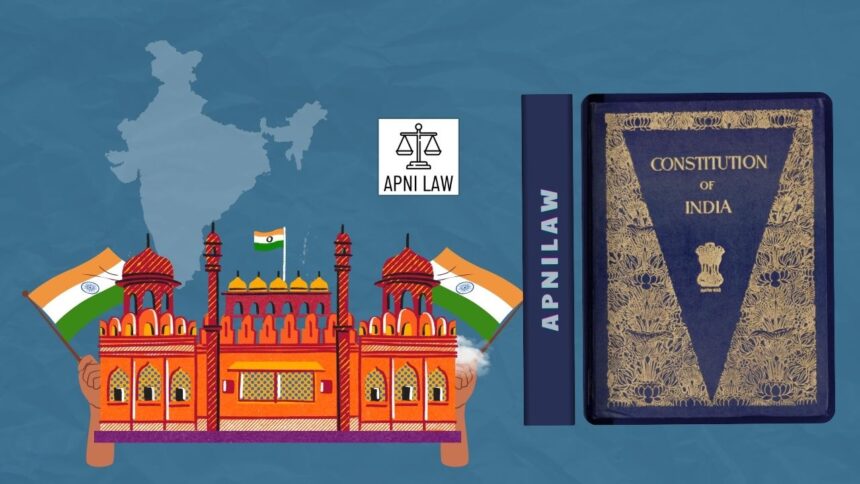The basic structure doctrine is one of the most important contributions of the Indian judiciary to constitutional law. It emerged in Kesavananda Bharati v. State of Kerala (1973), where the Supreme Court held that Parliament has wide powers to amend the Constitution under Article 368 but cannot alter or destroy its basic structure. After 1973, the Supreme Court used this doctrine repeatedly to protect constitutional essentials such as democracy, judicial review, secularism, and federalism. The Court clarified that the Constitution stands above Parliament and that judicial independence acts as its ultimate safeguard.
How Did the Doctrine Emerge in Kesavananda Bharati?
The Kesavananda Bharati judgment marked a turning point in Indian constitutional history. A thirteen-judge bench ruled by a narrow majority that Parliament cannot use Article 368 to amend the Constitution in a way that destroys its basic structure. The Court did not provide a closed list of what constitutes the basic structure, but it emphasized features such as the supremacy of the Constitution, separation of powers, rule of law, judicial review, and fundamental rights.
This doctrine limited parliamentary supremacy and shifted constitutional interpretation towards the supremacy of the Constitution. It also empowered the judiciary to act as the guardian of constitutional principles. After 1973, the Court invoked this doctrine in several landmark cases to define and expand the meaning of the basic structure.
What Did the Indira Gandhi v. Raj Narain Case Decide?
The first major application of the doctrine came in Indira Nehru Gandhi v. Raj Narain (1975). This case arose after Prime Minister Indira Gandhi’s election was invalidated by the Allahabad High Court for electoral malpractices. During the appeal, Parliament passed the 39th Constitutional Amendment, which introduced Article 329A. This provision barred the judiciary from hearing disputes relating to the elections of the Prime Minister, President, Vice President, and Speaker.
The Supreme Court struck down clauses (4) and (5) of Article 329A. The Court declared that judicial review, democracy, free and fair elections, and independence of the judiciary are part of the basic structure. By removing the power of courts to hear election disputes involving the Prime Minister, Parliament had undermined these core features. The judgment confirmed that no office, not even that of the Prime Minister, could be placed beyond judicial scrutiny.
This ruling cemented democracy and judicial review as inviolable parts of the basic structure and reinforced the separation of powers.
Why Was Minerva Mills a Landmark in 1980?
The Minerva Mills v. Union of India (1980) case further elaborated the basic structure doctrine. The challenge arose against sections of the 42nd Constitutional Amendment (1976), passed during the Emergency. This amendment attempted to exclude judicial review of constitutional amendments and to give absolute primacy to Directive Principles of State Policy over Fundamental Rights.
The Supreme Court struck down sections 4 and 55 of the amendment. The Court held that judicial review is an essential feature of the Constitution and that the balance between Fundamental Rights and Directive Principles forms part of the basic structure. The judgment reaffirmed that Parliament’s power to amend the Constitution is limited. It cannot take away citizens’ fundamental freedoms under the guise of pursuing directive principles.
Minerva Mills restored constitutional balance and prevented Parliament from making itself supreme over the judiciary and fundamental rights.
How Did Waman Rao Clarify the Ninth Schedule?
In Waman Rao v. Union of India (1981), the Court addressed the issue of laws placed in the Ninth Schedule of the Constitution. The Ninth Schedule was originally created to protect land reform laws from being challenged in court. Over time, Parliament began using it to shield many other laws from judicial review.
The Court ruled that all laws inserted in the Ninth Schedule after April 24, 1973, the date of the Kesavananda judgment, would be subject to the basic structure test. This meant that Parliament could not use the Ninth Schedule as a shield to protect laws that violated constitutional essentials.
The decision ensured that the doctrine of basic structure remained effective even against attempts to bypass judicial scrutiny through constitutional “immunity.”
How Did S.R. Bommai Expand the Doctrine?
The Supreme Court gave another landmark interpretation in S.R. Bommai v. Union of India (1994). The case dealt with the misuse of Article 356, which allows the President to impose President’s Rule in states.
The Court held that secularism, federalism, and democracy are part of the basic structure of the Constitution. It also ruled that the President’s satisfaction under Article 356 is not beyond judicial review. The judiciary can examine whether the proclamation of President’s Rule was justified.
This judgment expanded the reach of the basic structure doctrine to include federalism and secularism. It also established that central authority cannot arbitrarily dismiss state governments without judicial scrutiny.
What Did IR Coelho Decide in 2007?
The case of IR Coelho v. State of Tamil Nadu (2007) further strengthened judicial review. The issue was whether laws placed in the Ninth Schedule after 1973 could still be challenged on the ground that they violated the basic structure.
The Court held that all such laws, irrespective of being placed in the Ninth Schedule, must pass the basic structure test. If they violated principles like the rule of law, equality, or judicial review, they would be invalid.
This judgment reaffirmed that Parliament cannot use any device to place its laws beyond judicial scrutiny. It extended the scope of the basic structure doctrine and confirmed the judiciary’s power as the final guardian of the Constitution.
What Elements Form the Basic Structure of the Constitution?
Through these judicial interpretations, the Court has identified several features as part of the basic structure. These include the supremacy of the Constitution, rule of law, separation of powers, judicial review, federalism, secularism, democracy, free and fair elections, independence of the judiciary, and the balance between Fundamental Rights and Directive Principles.
The list is not exhaustive. The Court has deliberately avoided fixing a closed list so that the doctrine remains flexible. This flexibility allows the Constitution to adapt to new challenges while preserving its essential identity.
Why Is the Doctrine Significant for Indian Democracy?
The basic structure doctrine shifted Indian constitutional jurisprudence away from parliamentary supremacy and towards constitutional supremacy. Parliament can amend the Constitution, but it cannot change its identity. The judiciary acts as the final interpreter and protector of this identity.
This approach maintains checks and balances between the legislature, executive, and judiciary. It ensures that no organ of the state can undermine the democratic framework. The doctrine has become a shield against authoritarian tendencies and legislative overreach.
The evolving nature of the doctrine also means that it continues to respond to new threats. Whether it is protecting secularism, federalism, or judicial independence, the Court has invoked the doctrine to safeguard the spirit of the Constitution.
For any specific query call at +91 – 8569843472
Conclusion
The judicial interpretation of the basic structure doctrine after 1973 transformed Indian constitutional law. Starting with Indira Gandhi v. Raj Narain (1975) and moving through Minerva Mills (1980), Waman Rao (1981), S.R. Bommai (1994), and IR Coelho (2007), the Supreme Court reaffirmed that certain features of the Constitution are inviolable.
The doctrine protected democracy, secularism, federalism, and judicial independence. It placed limits on Parliament’s power to amend the Constitution and ensured that judicial review remained intact. By doing so, the Court preserved constitutional supremacy and safeguarded the democratic identity of India.
The doctrine continues to guide constitutional interpretation, proving that the Constitution is not merely a legal document but the living foundation of Indian democracy.







